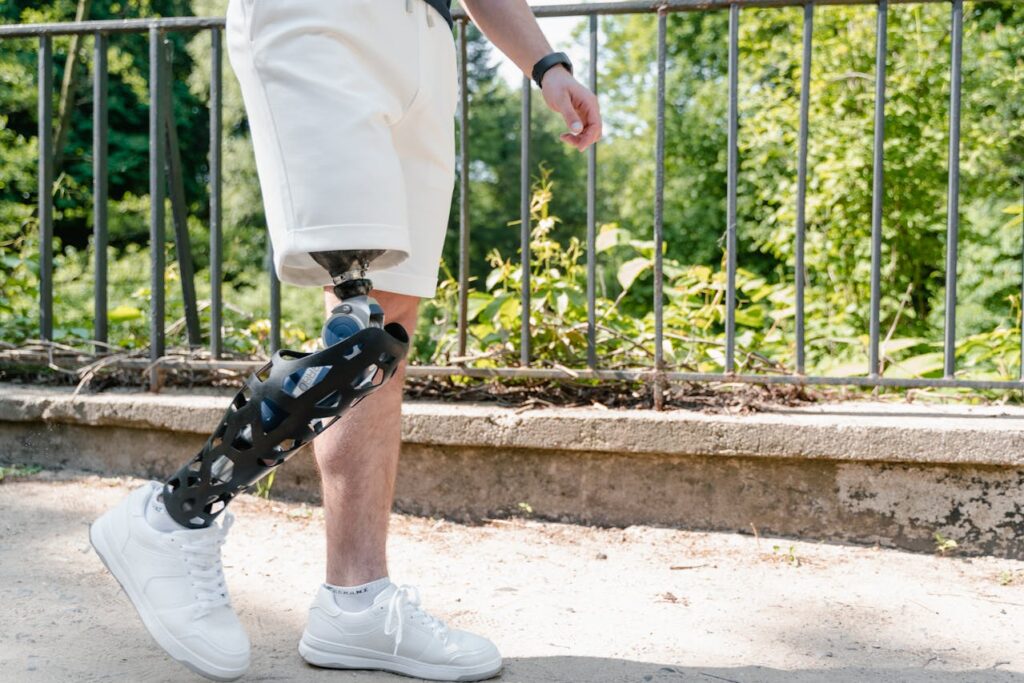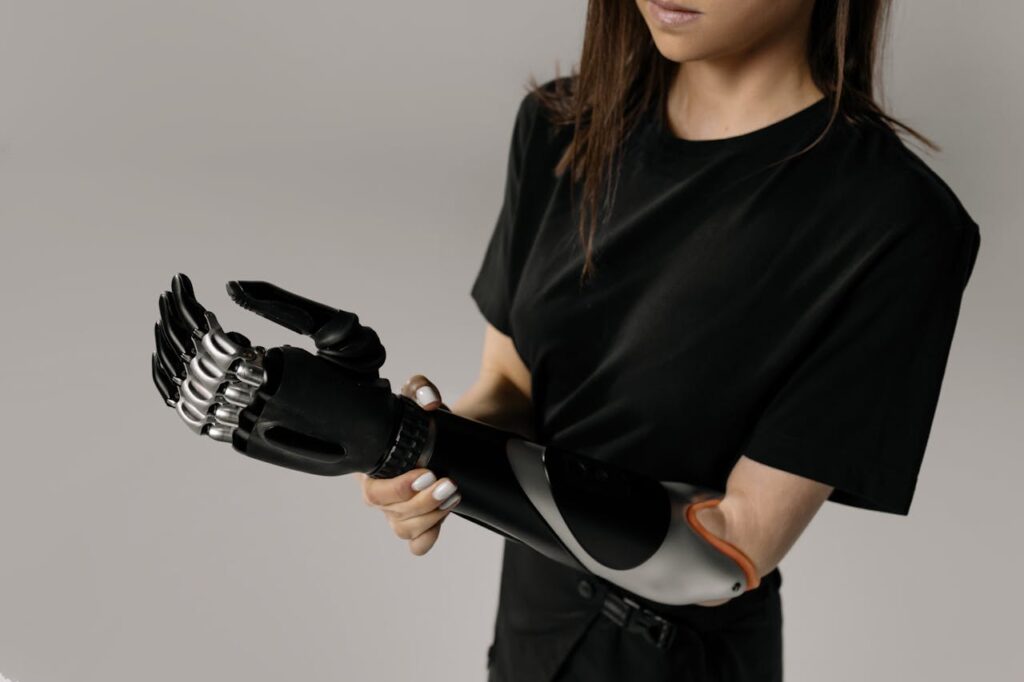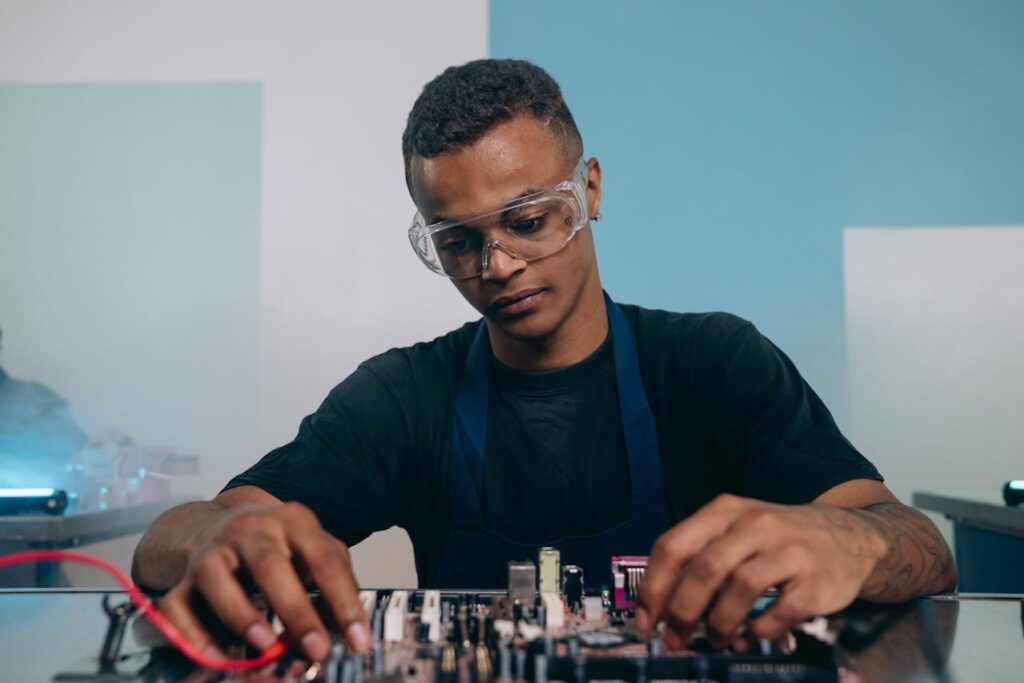When it comes to prosthetics, comfort and functionality go hand in hand. Lightweight prosthetics have revolutionized the industry by offering users enhanced mobility, reduced strain, and improved adaptability for everyday tasks. Whether you’re seeking a prosthetic for daily use or a more specialized model, choosing one designed for maximum comfort is key to a seamless experience.
In this article, we’ll explore how lightweight prosthetics are changing lives and introduce some of the top brands leading the way in this field. We’ll also discuss what to look for when choosing a prosthetic and how to ensure the perfect fit for your needs.
Why Lightweight Prosthetics Matter
Lightweight prosthetics are not just a convenience—they’re a necessity for many users. Traditional prosthetics, while functional, can often feel bulky or restrictive, particularly during extended use. Lightweight models address these challenges by using advanced materials and innovative designs to minimize weight without compromising durability or functionality.
Enhancing Daily Mobility
A lighter prosthetic reduces the energy required to perform daily tasks, allowing users to move more naturally and efficiently. This is especially important for individuals who rely on their prosthetic for long periods, as excessive weight can lead to fatigue or discomfort.
For example, lightweight arm prosthetics make it easier to perform tasks like cooking, writing, or carrying objects. Similarly, lightweight leg prosthetics enable smoother walking, running, or climbing stairs, giving users greater independence and confidence.
Businesses specializing in prosthetics should prioritize the development of lightweight models to meet this growing demand. At Robobionics, we focus on combining advanced materials with ergonomic designs to create solutions that feel as natural as possible.
Reducing Strain on the Body
Heavy prosthetics can place undue strain on the residual limb, shoulders, or back, leading to long-term discomfort or even health issues. Lightweight prosthetics distribute weight more evenly, reducing pressure points and enhancing overall comfort.
For users with sensitive skin or a history of joint pain, this feature is particularly valuable. By choosing a lightweight prosthetic, they can minimize the risk of irritation and enjoy a more comfortable fit.
Businesses should educate users about the benefits of lightweight options, emphasizing their role in promoting long-term health and well-being.

Supporting Long-Term Physical Health
Heavy prosthetics often place strain on the body, leading to discomfort and potential health complications over time.
Lightweight prosthetics address this by reducing the load on the residual limb and other supporting muscles, helping to prevent issues like joint pain, muscular fatigue, or posture-related problems.
For users who rely on prosthetics for extended periods each day, the reduction in weight can significantly improve their overall physical health. Businesses should emphasize this long-term benefit when communicating with potential customers.
Demonstrating the link between lightweight designs and physical well-being can build trust and reinforce the idea that these prosthetics are not just tools but investments in quality of life.
Enhancing Natural Movement
A lighter prosthetic closely mimics the fluidity of natural movement, making it easier for users to navigate various environments without hesitation.
Whether it’s climbing stairs, reaching for an object, or simply walking through a crowded space, lightweight designs enable smoother, more intuitive actions.
For businesses, focusing on how lightweight prosthetics integrate into real-world scenarios creates an opportunity to connect with users’ aspirations.
Sharing stories or videos of users effortlessly performing everyday activities with lightweight prosthetics helps illustrate their practicality and versatility, encouraging adoption.
Empowering Active Lifestyles
Lightweight prosthetics are especially important for individuals with active lifestyles, such as athletes, outdoor enthusiasts, or physically demanding professionals.
The reduced weight minimizes energy expenditure, allowing users to focus on their performance rather than compensating for the weight of their device.
Businesses can position lightweight prosthetics as enablers of active living, appealing to users who value mobility and freedom. Highlighting how these prosthetics allow users to explore their passions—whether it’s running a marathon, kayaking, or pursuing a physically intensive career—adds emotional resonance to their practical appeal.
Boosting Psychological Well-Being
The psychological impact of using a prosthetic is profound, and lightweight designs play a crucial role in fostering confidence and reducing self-consciousness.
Heavy or bulky prosthetics can feel cumbersome, drawing attention to the user’s limb difference and potentially affecting their self-esteem. Lightweight prosthetics, by contrast, are often sleeker and less obtrusive, helping users feel more at ease in social and professional settings.
Businesses should address this emotional dimension in their messaging, emphasizing how lightweight prosthetics contribute to a user’s sense of normalcy and empowerment.
Including testimonials or case studies that highlight personal transformations can create a compelling narrative that resonates with prospective users.
Increasing Accessibility and Usability
Lightweight prosthetics are not only more comfortable to wear but are also easier to use, especially for individuals who may have limited physical strength or dexterity.
This makes them ideal for a wider range of users, including children, older adults, or those adapting to a prosthetic for the first time.
For businesses, designing lightweight models that cater to different demographics ensures inclusivity and broadens market reach. Partnering with rehabilitation centers or offering tailored educational programs can help users of all ages and abilities adapt to their prosthetic with ease, building loyalty and satisfaction.
Features to Look for in Lightweight Prosthetics
When selecting a lightweight prosthetic, it’s essential to consider both the materials and design features that contribute to comfort and functionality. Advanced materials like carbon fiber, titanium, and medical-grade polymers are commonly used to create prosthetics that are both strong and light.
Ergonomic designs also play a critical role in enhancing user experience. Features like adjustable sockets, breathable liners, and customizable components ensure a secure and comfortable fit tailored to the individual’s needs.
Material Innovation for Comfort and Strength
The choice of materials in lightweight prosthetics is pivotal. High-performance materials such as carbon fiber, titanium alloys, and medical-grade polymers offer the perfect balance of strength and weight reduction.
These materials ensure that the prosthetic remains robust enough for demanding activities while being light enough to minimize user fatigue.
Businesses should prioritize sourcing materials that enhance user comfort, such as those with vibration-dampening properties to reduce discomfort during extended use.
For example, a lightweight leg prosthetic designed with shock-absorbing elements ensures smoother motion on uneven terrain, making it ideal for active users.
Highlighting these material advantages in user education campaigns can emphasize the long-term benefits of investing in quality prosthetics.
Ergonomic Design for Natural Movement
The design of a prosthetic plays a crucial role in how seamlessly it integrates into a user’s daily routine. Lightweight prosthetics must be ergonomically shaped to mimic natural movements, ensuring that users can perform tasks effortlessly.
For instance, arm prosthetics with adaptive grip technology allow users to handle objects of varying sizes and weights with precision and ease.
Businesses should focus on testing ergonomic designs in real-world scenarios, gathering feedback from users to refine functionality. Providing modular designs that allow users to adjust their prosthetic for specific activities enhances both usability and satisfaction.
This flexibility demonstrates a commitment to user-centric solutions and helps establish brand loyalty.
Advanced Suspension Systems
A prosthetic’s suspension system determines how securely it attaches to the residual limb. Lightweight prosthetics with advanced suspension mechanisms, such as vacuum-assisted systems or silicone liners, ensure a snug fit without causing discomfort.
These systems distribute weight evenly and reduce the risk of pressure points, enabling users to wear their prosthetic for longer periods.
For businesses, investing in the development of customizable suspension solutions is key. Offering options for adjustable liners or straps ensures that users can achieve an optimal fit, regardless of their residual limb shape or size.
Highlighting the comfort and stability provided by these features in product marketing can help differentiate your brand from competitors.
Breathable and Skin-Friendly Components
For many users, skin irritation or discomfort can be a significant concern, especially in warm or humid environments. Lightweight prosthetics with breathable liners or hypoallergenic materials address this issue by minimizing moisture buildup and promoting airflow.
Businesses should consider integrating sweat-wicking fabrics or antimicrobial coatings into their designs to further enhance comfort.
Educating users about the importance of maintaining hygiene and offering care products tailored to these features can improve the overall user experience and satisfaction.
Intuitive Functionality with Advanced Technology
While weight reduction is a primary goal, functionality should never be compromised. Lightweight prosthetics with embedded technology, such as AI-powered motion tracking or sensor-driven adjustments, offer users intuitive control and adaptability.
These features enable prosthetics to respond dynamically to user intentions, creating a more natural and seamless experience.
For businesses, integrating these advanced technologies into lightweight designs opens opportunities to cater to tech-savvy users seeking innovative solutions.
Demonstrating how these features improve real-world usability through demonstrations or user testimonials can create a compelling value proposition.

Durability Without Bulk
Lightweight prosthetics must withstand the rigors of daily use, from physical activities to exposure to environmental factors like rain or dust. By incorporating durable materials and protective coatings, businesses can ensure that their prosthetics maintain peak performance over time.
For example, a waterproof arm prosthetic designed with lightweight yet robust materials offers users the freedom to engage in activities like swimming or working in damp conditions without worry.
Highlighting these practical applications in marketing efforts underscores the versatility and reliability of your products.
Scalable Customization Options
Customization is a key feature for lightweight prosthetics, allowing users to adapt their device to their unique needs and preferences. Scalable options, such as interchangeable components or adjustable sockets, provide flexibility and accommodate changes over time, such as growth in pediatric users or evolving activity levels in adults.
Businesses should offer seamless customization processes, supported by digital tools like 3D modeling or augmented reality visualizations, to ensure users can preview and select the features they need.
By demonstrating how customization enhances comfort and usability, companies can position themselves as leaders in user-focused prosthetic solutions.
Strategic Focus for Businesses
For businesses, understanding these features and their impact on user experience is critical for driving innovation and meeting market demands.
Collaborating with users during the development process ensures that lightweight prosthetics address real-world challenges effectively. Additionally, investing in educational initiatives to highlight the benefits of these features builds trust and empowers users to make informed decisions.
At Robobionics, we’re dedicated to advancing lightweight prosthetics that combine state-of-the-art technology with a deep commitment to user comfort. By focusing on features that enhance both form and function, we create solutions that redefine what prosthetics can achieve.

Top Brands Leading the Lightweight Prosthetics Market
The prosthetics industry is filled with innovative companies dedicated to designing lightweight solutions that enhance mobility and comfort. While every user’s needs are unique, exploring the top brands in the market can help narrow down options and highlight key features to look for.
Robobionics: Revolutionizing Lightweight Prosthetics in India
As a leader in prosthetic innovation, Robobionics specializes in creating lightweight, durable solutions that cater to the diverse needs of users. Our focus is on combining advanced materials, ergonomic designs, and cutting-edge technology to ensure maximum comfort.
For example, our flagship product, Grippy™, is a 3D-printed bionic hand that balances functionality with lightweight construction, making it ideal for everyday use.
Our commitment to affordability and accessibility ensures that high-quality prosthetics are available to a broader audience. By emphasizing local manufacturing and user-centered design, Robobionics sets a high standard for lightweight prosthetics in India and beyond.
Ottobock: Pioneering Comfort and Innovation
A global leader in prosthetic technology, Ottobock is known for its high-performance designs that prioritize user comfort.
Their lightweight solutions include advanced leg prosthetics with microprocessor-controlled knees and carbon-fiber foot designs, which adapt seamlessly to various terrains.
Ottobock also offers a range of arm prosthetics that combine sleek aesthetics with practical functionality. Their emphasis on research and development ensures that their products stay at the forefront of the industry, providing users with reliable and adaptable solutions.
Össur: Lightweight Solutions for Active Lifestyles
Össur specializes in prosthetics designed for active users, with a focus on lightweight construction and high durability. Their products often incorporate carbon-fiber technology, which delivers exceptional strength without added weight.
For example, Össur’s range of lower-limb prosthetics is renowned for its energy-return capabilities, enabling users to walk, run, or participate in sports with ease.
Their attention to detail and commitment to innovation make them a popular choice for individuals seeking maximum performance.
Hanger Clinic: Personalized Lightweight Prosthetics
Hanger Clinic emphasizes the importance of a tailored fit in creating comfortable, lightweight prosthetics. Their approach combines state-of-the-art technology with personalized care, ensuring that every device is customized to the user’s needs.
Hanger Clinic’s focus on modular and adjustable designs allows users to fine-tune their prosthetic for an ideal fit. This flexibility enhances both comfort and functionality, making their products a strong contender in the lightweight prosthetics market.
Factors to Consider When Choosing a Lightweight Prosthetic
Selecting the right prosthetic involves more than just comparing brands—it’s about finding a solution that aligns with your lifestyle, goals, and physical needs. Factors such as the type of prosthetic, materials used, and level of customization all play a role in determining the best fit.
Matching the Prosthetic to Your Activity Level
Your daily activities and routines should heavily influence your choice of prosthetic. For example, if you’re highly active or involved in sports, a prosthetic with advanced features like energy-return technology or adaptive motion may be necessary.
On the other hand, if you prioritize aesthetics and simplicity, a passive prosthetic may be the better option.
Businesses should focus on educating users about how different lightweight designs cater to varying levels of activity. At Robobionics, we take the time to understand each user’s needs and recommend solutions that enhance their quality of life.

Ensuring a Perfect Fit
The fit of a prosthetic is just as important as its weight. Lightweight prosthetics with adjustable sockets, breathable liners, and ergonomic designs minimize discomfort and improve usability.
Working closely with a prosthetist to achieve the right fit ensures that the prosthetic feels secure and comfortable during daily use.
For businesses, investing in advanced fitting technologies, such as 3D scanning or digital modeling, enhances the precision of their designs. Offering follow-up consultations to refine the fit further demonstrates a commitment to user satisfaction.
Actionable Advice for Users
Choosing a lightweight prosthetic is a significant decision that requires careful consideration and collaboration with a trusted provider. Begin by assessing your specific needs and goals—whether it’s maximizing mobility, reducing strain, or achieving a natural appearance.
Trying out different models can provide valuable insights into how each prosthetic feels and functions. Many providers, including Robobionics, offer trial sessions to help users experience the benefits of lightweight designs firsthand. Taking advantage of these opportunities ensures you make an informed choice.
Prioritize User-Centered Design
Understanding the unique needs and preferences of users is essential for creating prosthetics that deliver comfort and functionality. Businesses should engage directly with users during the design and testing phases to gather feedback and refine their products.
Lightweight prosthetics should not only reduce physical strain but also feel intuitive and natural in a user’s daily life.
For example, incorporating modular features allows users to adjust their prosthetic for different tasks or environments, enhancing its overall versatility. At Robobionics, we emphasize a user-centered approach, ensuring that every product reflects the input and experiences of those who rely on it.
Invest in Material Innovation
Lightweight prosthetics depend on advanced materials that balance strength, durability, and comfort. Investing in research and development to explore cutting-edge options—such as carbon composites, high-performance polymers, or even bioengineered materials—ensures that businesses stay ahead of industry trends.
Highlighting the use of these materials in marketing campaigns can also strengthen brand reputation. Educating users about how specific materials improve their prosthetic’s performance builds trust and enhances their overall experience.
Expand Accessibility Through Cost-Effective Solutions
While lightweight prosthetics offer significant benefits, their advanced features and materials can drive up costs. Businesses should explore ways to make these solutions more accessible, such as using scalable manufacturing methods like 3D printing or offering modular designs that allow users to upgrade their prosthetics over time.
Creating partnerships with insurers, non-profit organizations, or government programs can further reduce financial barriers. At Robobionics, we are committed to balancing quality with affordability, ensuring that our lightweight designs reach as many users as possible.
Provide Comprehensive Support Services
The relationship between a business and its users doesn’t end after a prosthetic is delivered. Offering ongoing support—such as fitting adjustments, maintenance services, and training programs—helps users adapt to their prosthetic and achieve the best possible results.
Integrating digital tools, such as mobile apps that provide usage tips or track wear-and-tear, can further enhance user satisfaction. Businesses that prioritize post-sale engagement demonstrate a long-term commitment to their customers’ well-being.
Future Trends in Lightweight Prosthetics
The future of lightweight prosthetics is being shaped by advancements in materials, technology, and design. Businesses that anticipate and embrace these trends will be well-positioned to lead the industry.
Integrating Smart Features
The integration of smart technology into lightweight prosthetics is already transforming how users interact with their devices. From AI-driven motion prediction to sensors that provide real-time feedback, these features make prosthetics more intuitive and responsive.
Future innovations may include prosthetics that can learn and adapt to the user’s habits, further enhancing comfort and usability.

Exploring Sustainable Materials
Sustainability is becoming a key focus across industries, and prosthetics are no exception. The development of lightweight prosthetics made from recycled or biodegradable materials offers a way to reduce environmental impact while maintaining high performance.
Businesses that adopt sustainable practices can appeal to eco-conscious users and contribute to broader environmental goals.

Personalization Through Advanced Manufacturing
Advances in 3D printing and digital modeling are enabling greater customization in lightweight prosthetics. These technologies allow for precise, user-specific designs that optimize fit and functionality.
As customization becomes more accessible, users will increasingly expect prosthetics that reflect their individual needs and preferences.
At Robobionics, we’re investing in these future trends to ensure that our prosthetics remain at the forefront of innovation. By combining lightweight construction with cutting-edge features, we aim to deliver solutions that redefine comfort and functionality.
Conclusion
Lightweight prosthetics are more than just devices—they’re tools of empowerment that enable users to live more active, comfortable, and fulfilling lives. By reducing physical strain, enhancing mobility, and offering a natural fit, these designs set a new standard for prosthetic comfort.
For users, choosing the right lightweight prosthetic involves understanding their goals, trying different options, and collaborating with trusted providers. For businesses, the opportunity lies in creating innovative, accessible solutions that cater to a diverse range of needs.
At Robobionics, we’re proud to lead the charge in lightweight prosthetic innovation. Our commitment to advanced materials, user-centered design, and ongoing support ensures that every prosthetic we deliver makes a meaningful difference.




my prosthetic lower right leg is very heavy,